There are two similar-sounding words commonly used in the garden-making lexicon that can get confusing.
Naturalized and Naturalistic.
The former is a term we use to say that bulbs (and other plants) will settle in and reproduce over time. They will establish themselves as if they were natives. They will naturalize.
Some bulbs, like daffodils, will naturalize, and over time, a clump of blooms will expand and enlarge as they establish and grow. Others (like most, but not all tulips) will not. Over time, they either remain as they are, or they might even fade with age. Garden design that includes a layer of spring bulbs should understand the difference.
I like to choose naturalizing bulbs when I can, but I’m often lured by the color and beauty of others and disregard any thoughts of future reproduction for more timely satisfaction.
Now, Naturalistic is a style of garden planting that is inspired and guided by emulating nature.
Naturalistic gardens are a hot trend, not just because they have all the unexpected excitement of wilder landscapes but also because when we cultivate them, we challenge ourselves to do every bit as well as nature would have done on its own – but better. Better because we control the color, shapes, and location, but it is also very challenging – it is hard to outdo nature itself.
Naturalized bulbs would look really great in a Naturalistic garden. But you can also use non-naturalizing bulbs and still get the beauty of a naturalistic garden.
Want to know how?
Garden Design tips for planting bulbs in the most wild and beautiful way possible:
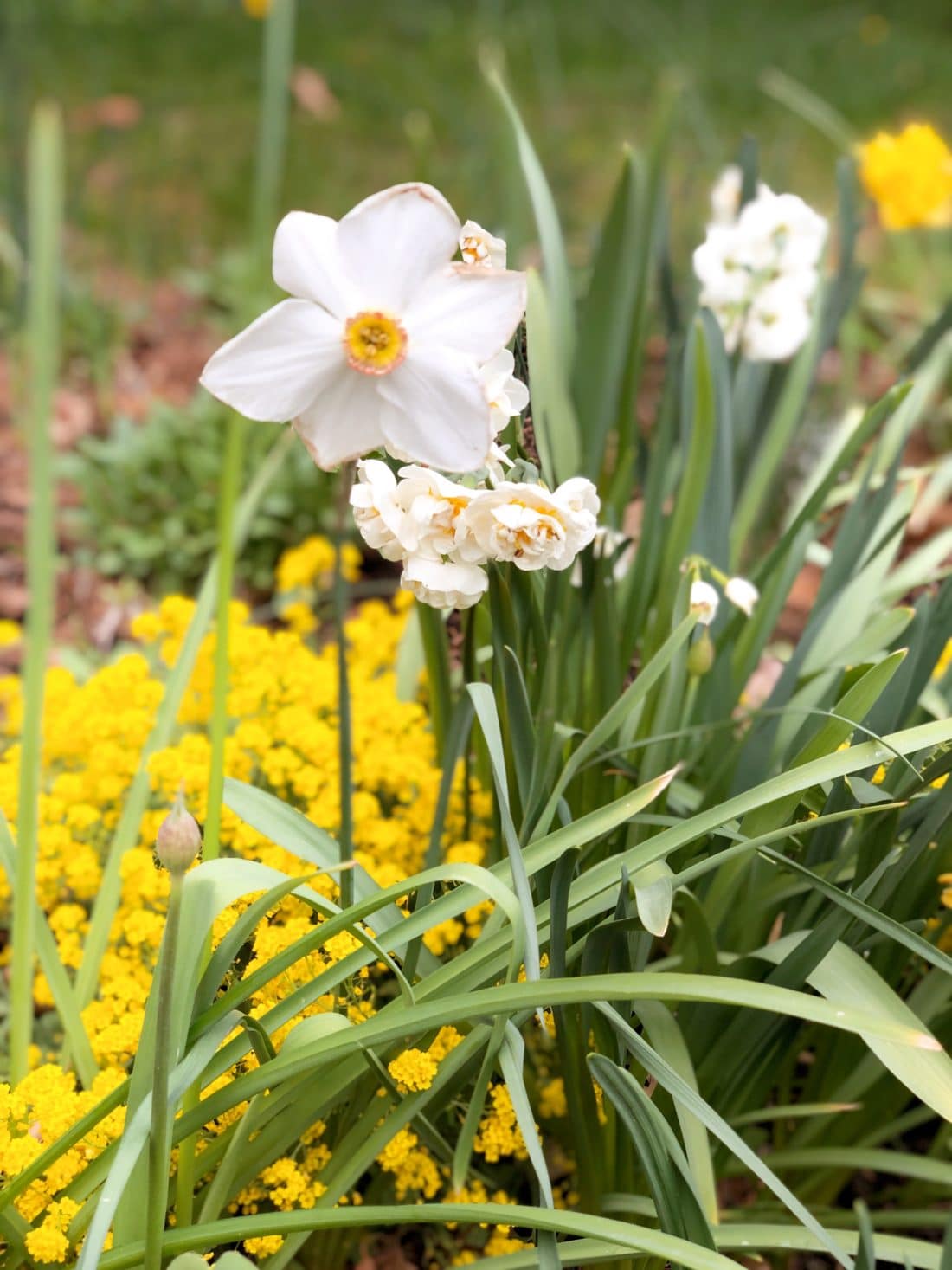
Nature looks random, so in order to re-create it, you need to create randomness.
How do you purposefully be random? Turns out humans have a really hard time being completely arbitrary. It is against our very nature, and even our random intentions often come out more organized than we might wish. In my garden, it is often the things I didn’t try to create (I call them happy accidents) that look the most amazing – precisely because of the randomness that just happened. But here are a few pointers to catch-as-catch-can your bulb planting:
Eliminate straight line or formulaic plantings (no counting, no conscientious spacing, no formulaic mixes)
Mix bulb varieties together (I suggest putting your chosen varieties in a box and mix them all together and then plant just what you can grab in a couple of handfuls at a time)
Vary clump sizes – As I said before no standard groupings in a hole… mix it up. Put 3-4 in one home and maybe 9-10 in another.
Space irregularly – (try tossing them into a bed and planting groups wherever they land!)
How to Plant Bulbs in Layers
Layering of plants can come in many forms. There is the idea of succession planting – at its simplest, it is strategically planting so that you always have something ‘in season’ doing its big, beautiful thing.
But with bulbs, we can take it a bit further. We can literally layer them in the ground.
You can layer bulbs under other plants or even other bulbs. This is a space saving option that gets you more bloom power per square foot. I like to layer bulbs of different seasons in one hole (bigger bulbs generally get planted deeper). That way as one is fading, another is filling in.
You can also layer bulbs so that you are purposefully creating interesting interminglings. If you plant bulbs under the canopy of neighboring perennials & shrubs, then when they grow through the neighbor’s branches, the shrub may even help to stake taller plants.
A friend recently shared that he plants lilies adjacent and under his hydrangeas so the big trumpet shaped blooms contrast with the big balls of hydrangea flowers. (sounds amazing!)
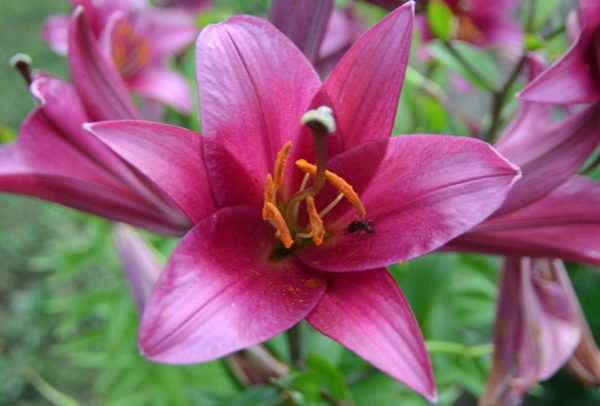
Inspired by this, I’ve planted lots of taller lilies around the bases of my spirea to grow through the arching stems. My old Anthony Waterer’s were boring me and were just about to get the axe when, inspired by the hydrangea pairing idea, I’ve opted instead to underplant them with Purple Prince Tree Lilies (did you know that many lily varieties can get over 6 ft tall!?!). I’m looking forward to seeing how this combo plays out.
Growing bulbs through other plants also gives you a natural shield to hide away the bulb foliage as it fades. In my own garden, I accidentally discovered this trick when my Japanese maple grew over bulbs I’d planted nearby and now I have beautiful purple backdrops to my spring daffs and tulips – but also, I never even notice the wilted floiage that withers beneath the tree branches.
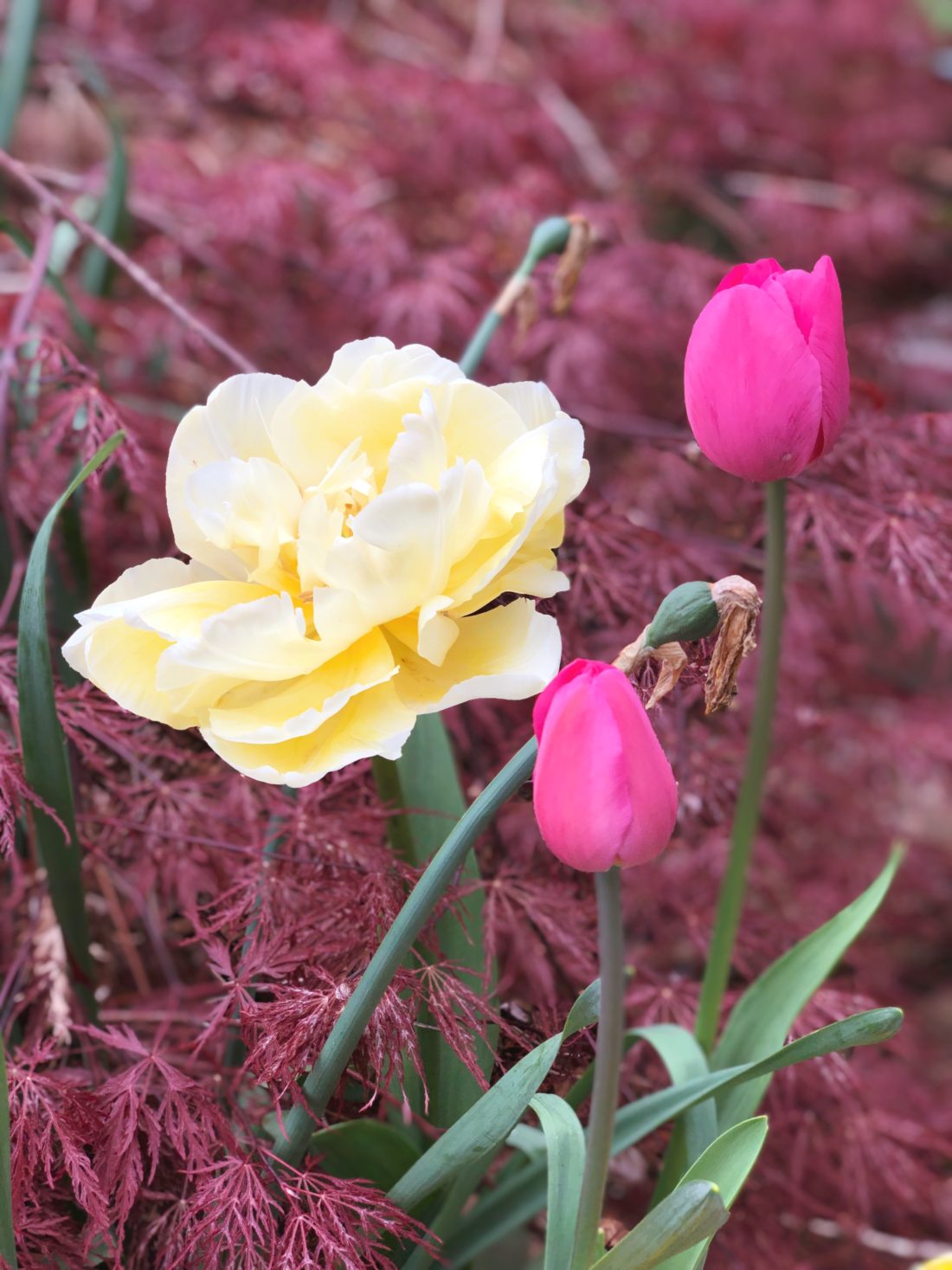
Plant bulbs for all Seasons (Spring, Summer and Fall)
Fall-planted bulbs will bloom in the spring – we tend to know this season the best.
(this is all your daffodils, tulips, crocus, allium, chiondaxa, fritillaria, etc.)
Spring-planted bulbs will bloom in the summer.
These seem to be less common but include lilies, crocosmia, gladiolas, elephant ear, cannas etc.
But then there are also the most overlooked summer-planted bulbs that will bloom in the fall.
The selection here is less but includes colchicum, autumn crocus, lycoris, sternbergia, and a couple of others.
If you want to keep things exciting and take full advantage of all the seasons (as nature would!) – plant a selection for every season. You only have to do it once because if you choose bulbs that are hardy to your region, they will come back in the right season every year.
In Bulbs and in Garden Design… Less is Just Less
Most people radically underestimate the amount of bulbs they need to plant to achieve a “full” look.
I’m never sorry if I take what I think I need and multiply by 10 (so if I think 10, I plant 100; if I think 100, I plant 1000 – no exaggeration)
You can never have too many bulbs. You can always squeeze in many times more than you think you can. And you will definitely be glad you did. These are bulb-planting certainties.
Naturalistic planting is full, there is no space between plants, they grow together in a layered and wild seeming way. The more you add, the more wild it will become.
With bulbs, less is depressingly less, and MORE IS ALWAYS BETTER.
My own favorite bulb planting – the result of me getting tired of digging holes (a random intervention), so I dug fewer, spaced them out less, and put more in a smaller area… and they look so much better than every arrangement I thought more about.
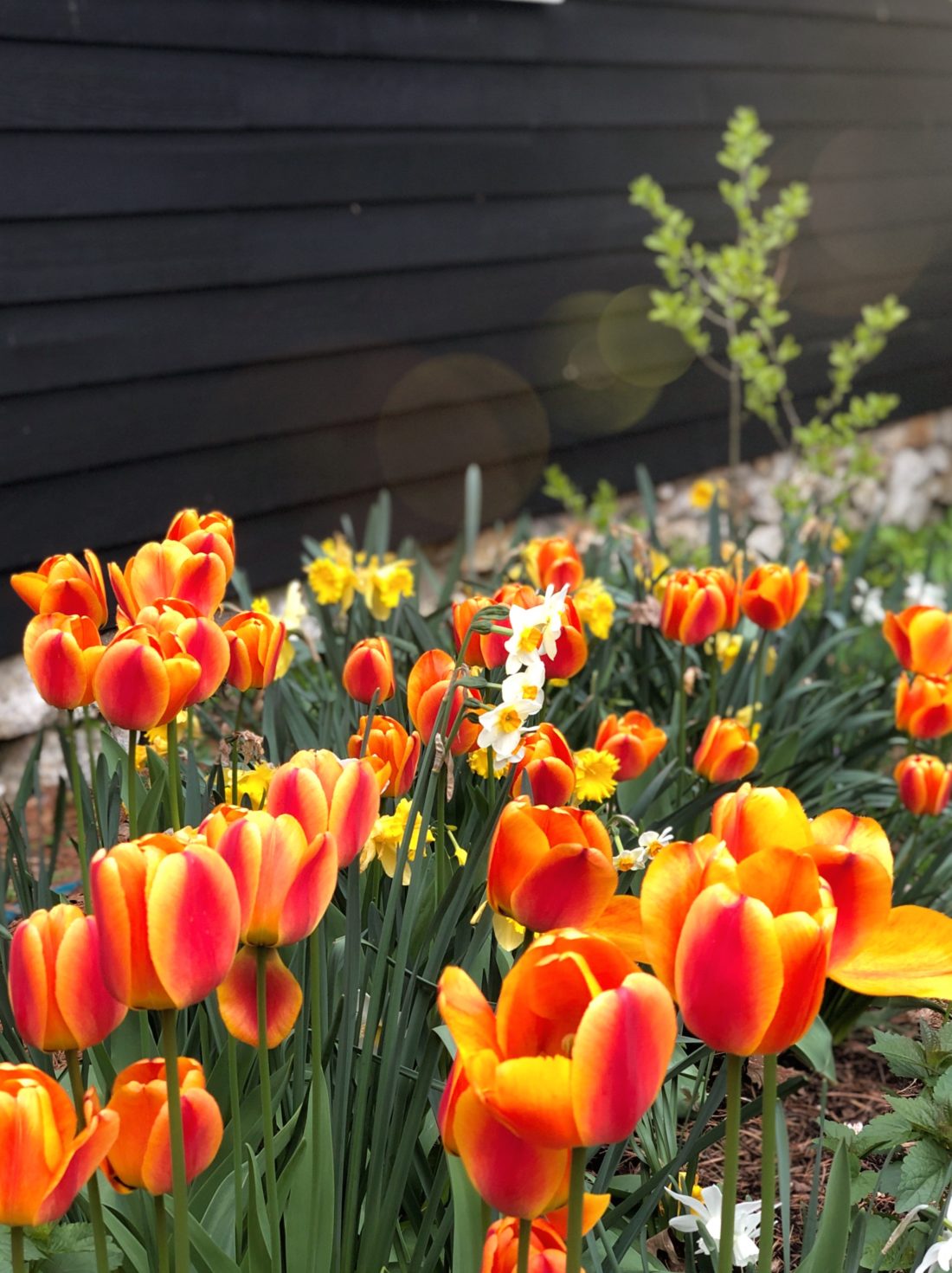
Spring is The Best Time to Plan (and Plant!) Summer Bulbs
Right now (springtime), all the perennials are out of the ground – but they aren’t very big. You can see where things are not as full and where you have some opportunities to add.
This is the season for bulb planning and planting (get those summer-blooming bulbs in now!).
I take lots of notes – and by notes, I generally mean pictures of locations and I keep track of my gardens with an online tool called Milanote (you can get a free account – I highly recommend this app for garden planning). I keep my pictures in the app and organize them so I can see the whole garden and I can make notes about colors, varieties, and where I need to add more when it is time.
It is also worth noting that in bulb- time there really are more than three seasons worth thinking about. There is at least late winter, early spring, mid-spring, late spring, early summer, mid-summer, late summer, and fall. If you pay attention, you can orchestrate blooms for all of them.
Here is a quick bulb hack if you want an easy succession – try something like early spring crocus, early, mid, and late season daffodils, early, mid, and late summer lilies, and then wrap it up with fall crocus. You can always add more as you gain confidence.
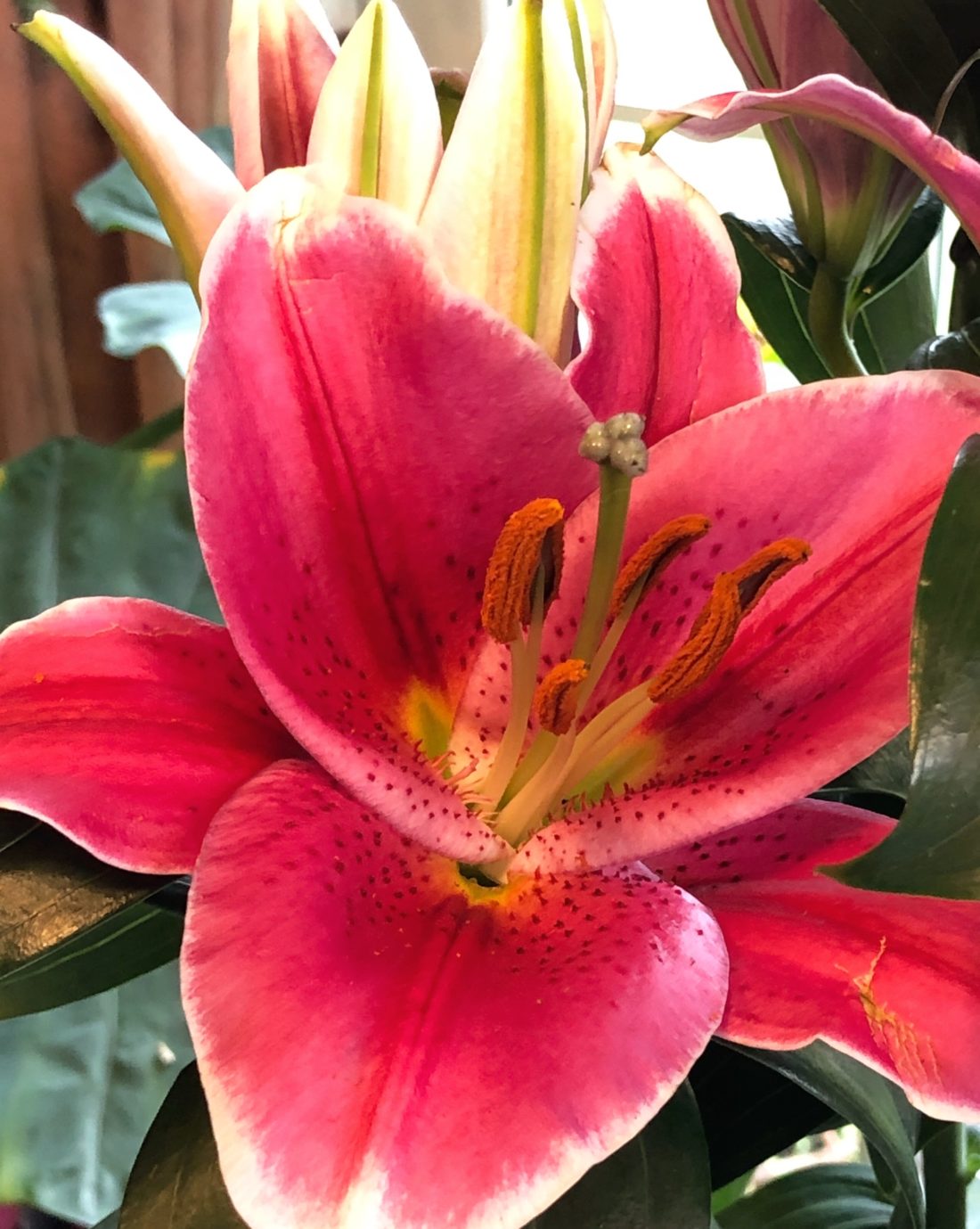
One more tip – If you don’t want to use photos and an app to keep track of where plants can be added, try using tongue depressors, plastic cutlery, or popsicle sticks to mark in the ground where you want to add new plants. Later in the fall, your garden will look very different – full with a whole season of growth, and you will not only have a hard time remembering where you wanted to add spring bloomers but also you can’t be blamed for forgetting that it even looked as sparse as it did back in May. Just make sure your markers are visible!
More posts about planting design for bulbs:
This post is sponsored by:
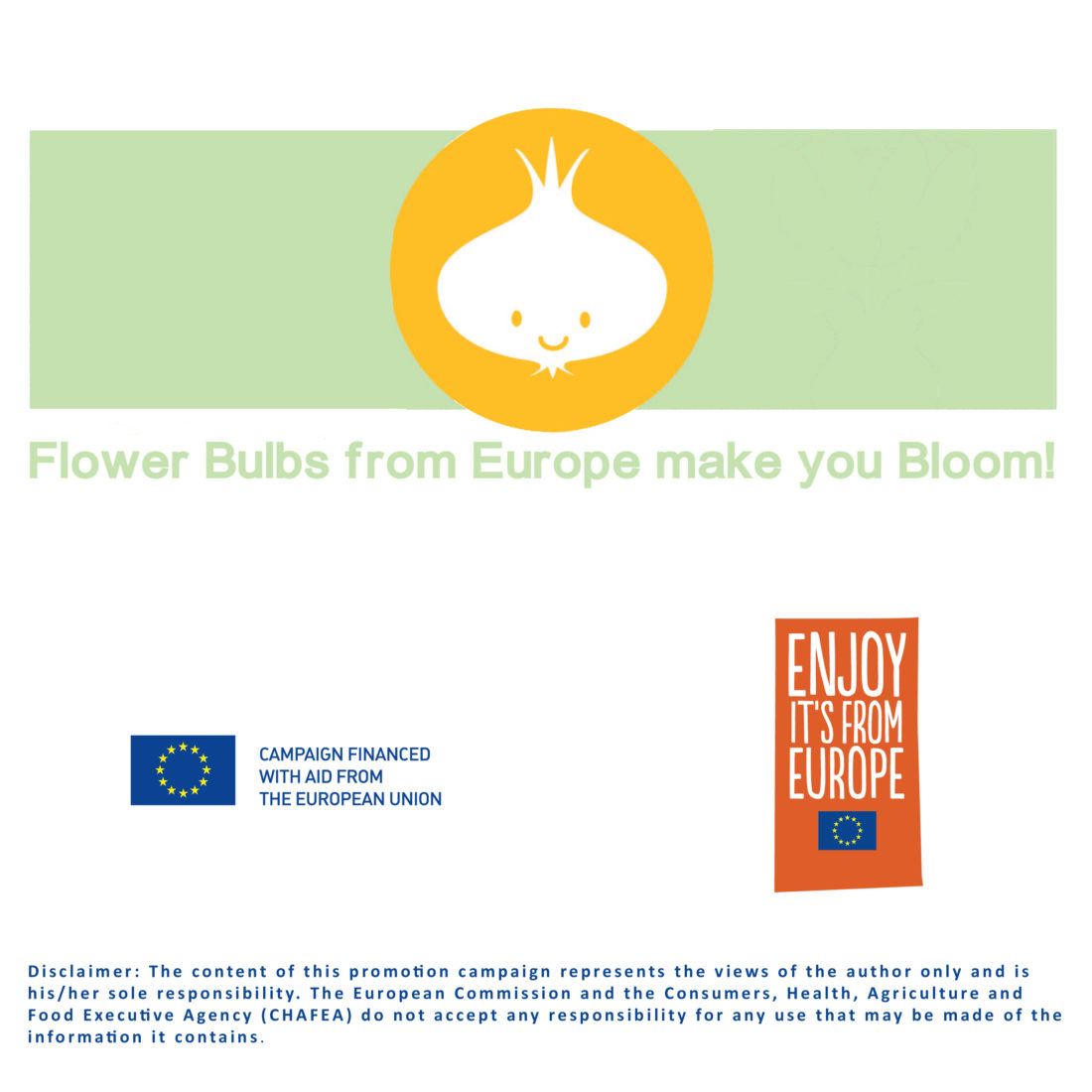
comments +